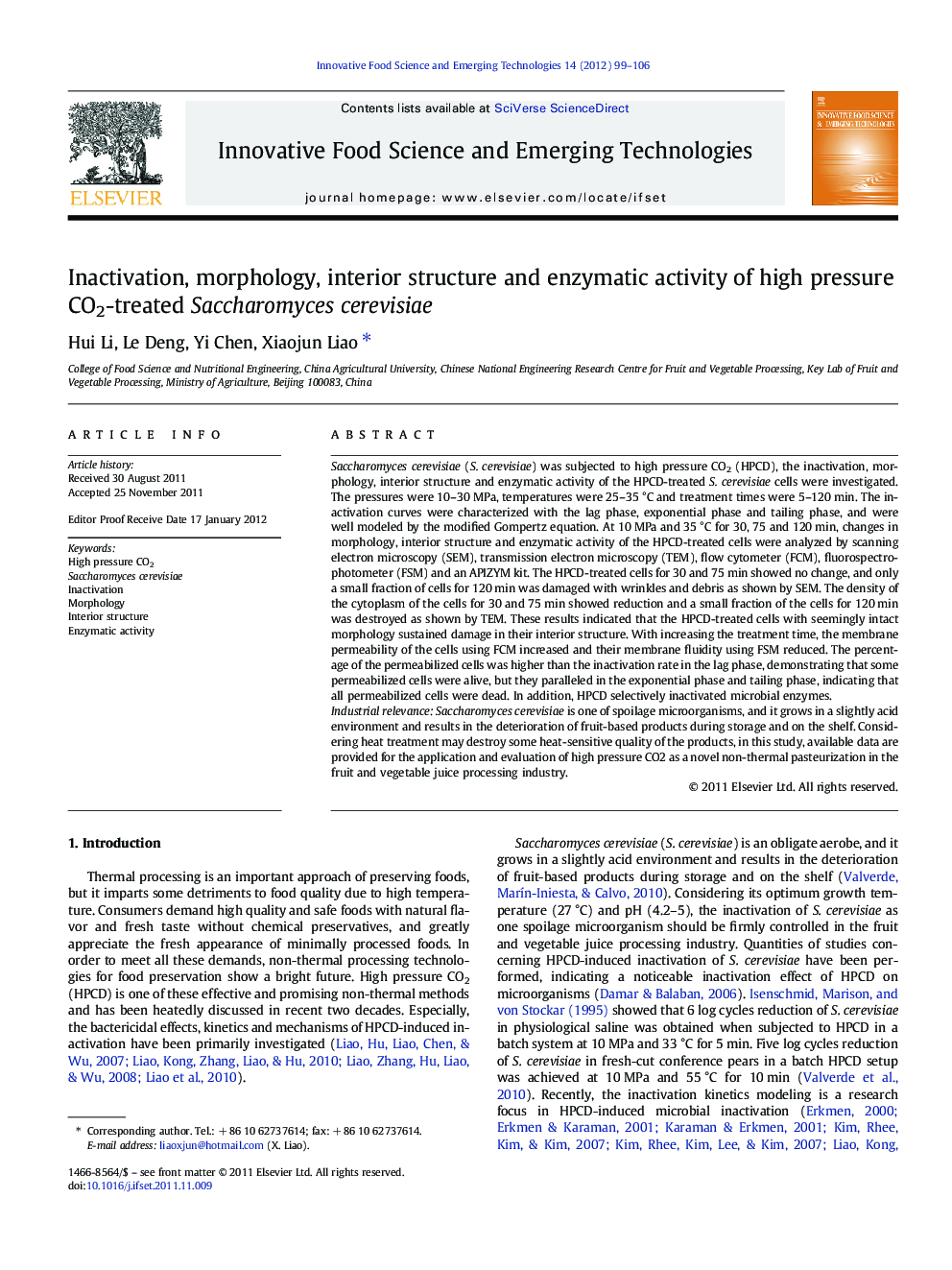| کد مقاله | کد نشریه | سال انتشار | مقاله انگلیسی | نسخه تمام متن |
|---|---|---|---|---|
| 2086919 | 1545552 | 2012 | 8 صفحه PDF | دانلود رایگان |

Saccharomyces cerevisiae (S. cerevisiae) was subjected to high pressure CO2 (HPCD), the inactivation, morphology, interior structure and enzymatic activity of the HPCD-treated S. cerevisiae cells were investigated. The pressures were 10–30 MPa, temperatures were 25–35 °C and treatment times were 5–120 min. The inactivation curves were characterized with the lag phase, exponential phase and tailing phase, and were well modeled by the modified Gompertz equation. At 10 MPa and 35 °C for 30, 75 and 120 min, changes in morphology, interior structure and enzymatic activity of the HPCD-treated cells were analyzed by scanning electron microscopy (SEM), transmission electron microscopy (TEM), flow cytometer (FCM), fluorospectrophotometer (FSM) and an APIZYM kit. The HPCD-treated cells for 30 and 75 min showed no change, and only a small fraction of cells for 120 min was damaged with wrinkles and debris as shown by SEM. The density of the cytoplasm of the cells for 30 and 75 min showed reduction and a small fraction of the cells for 120 min was destroyed as shown by TEM. These results indicated that the HPCD-treated cells with seemingly intact morphology sustained damage in their interior structure. With increasing the treatment time, the membrane permeability of the cells using FCM increased and their membrane fluidity using FSM reduced. The percentage of the permeabilized cells was higher than the inactivation rate in the lag phase, demonstrating that some permeabilized cells were alive, but they paralleled in the exponential phase and tailing phase, indicating that all permeabilized cells were dead. In addition, HPCD selectively inactivated microbial enzymes.Industrial relevanceSaccharomyces cerevisiae is one of spoilage microorganisms, and it grows in a slightly acid environment and results in the deterioration of fruit-based products during storage and on the shelf. Considering heat treatment may destroy some heat-sensitive quality of the products, in this study, available data are provided for the application and evaluation of high pressure CO2 as a novel non-thermal pasteurization in the fruit and vegetable juice processing industry.
► We modeled the inactivation curves of Saccharomyces cerevisiae by HPCD.
► The treated cells with intact morphology sustained interior structure damage.
► With increasing the treatment time, the membrane permeability of cells increased.
► With increasing the treatment time, the membrane fluidity of cells is reduced.
► HPCD selectively inactivated microbial enzymes.
Journal: Innovative Food Science & Emerging Technologies - Volume 14, April 2012, Pages 99–106